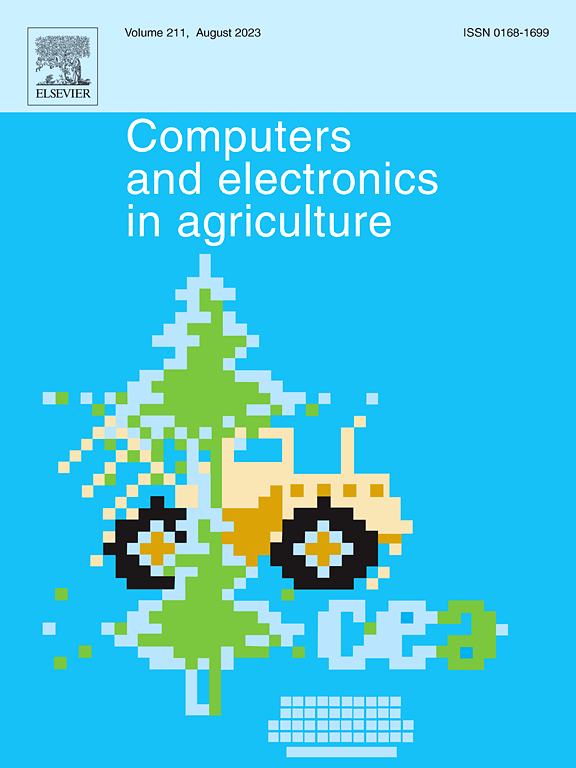Generating crop type labels from historical annual crop inventory data with an ensemble learning method
IF 8.9
1区 农林科学
Q1 AGRICULTURE, MULTIDISCIPLINARY
引用次数: 0
Abstract
Timely and accurate pre-season crop maps are essential for agricultural applications, disaster management, and policy formulation. However, pre-season mapping methods face significant challenges due to the lack of ground truth labels. In this study, an ensemble learning model was proposed to generate crop type labels from the historical Annual Crop Inventory (ACI) data. By introducing the rotation stability rate (RSR) metric to assess the stability of different crop planting sequences and adaptively setting appropriate probability thresholds for different crops, this method significantly improves the model’s prediction accuracy. In comparison to the “trusted pixels” approach, this method exhibited better accuracies for soybean, winter wheat, and pasture. Tested by ground truth data acquired in 2020 and 2021, the overall accuracies were both greater than 90 %. Tested by ACI data at another three regions located in Quebec, Ontario, and Manitoba, the overall accuracies are between 73 % and 86 %. The results demonstrated that the combination of RSR and ensemble learning model enhanced the ability to extract crop type label pixels using historical annual crop inventory data in regions with diverse cropping systems.
利用集成学习方法从历史年度作物库存数据生成作物类型标签
及时、准确的季前作物图对农业应用、灾害管理和政策制定至关重要。然而,由于缺乏地面真实度标签,季前制图方法面临着重大挑战。在这项研究中,提出了一个集成学习模型,从历史年度作物清单(ACI)数据中生成作物类型标签。该方法通过引入轮作稳定率(RSR)指标来评估不同作物种植序列的稳定性,并针对不同作物自适应设置合适的概率阈值,显著提高了模型的预测精度。与“可信像素”方法相比,该方法在大豆、冬小麦和牧草中表现出更好的准确性。通过2020年和2021年采集的地面真值数据测试,总体精度均大于90%。ACI数据在魁北克、安大略和马尼托巴的另外三个地区进行了测试,总体准确率在73%到86%之间。结果表明,RSR和集成学习模型的结合增强了利用不同种植制度地区的历史年度作物清查数据提取作物类型标签像素的能力。
本文章由计算机程序翻译,如有差异,请以英文原文为准。
求助全文
约1分钟内获得全文
求助全文
来源期刊

Computers and Electronics in Agriculture
工程技术-计算机:跨学科应用
CiteScore
15.30
自引率
14.50%
发文量
800
审稿时长
62 days
期刊介绍:
Computers and Electronics in Agriculture provides international coverage of advancements in computer hardware, software, electronic instrumentation, and control systems applied to agricultural challenges. Encompassing agronomy, horticulture, forestry, aquaculture, and animal farming, the journal publishes original papers, reviews, and applications notes. It explores the use of computers and electronics in plant or animal agricultural production, covering topics like agricultural soils, water, pests, controlled environments, and waste. The scope extends to on-farm post-harvest operations and relevant technologies, including artificial intelligence, sensors, machine vision, robotics, networking, and simulation modeling. Its companion journal, Smart Agricultural Technology, continues the focus on smart applications in production agriculture.
 求助内容:
求助内容: 应助结果提醒方式:
应助结果提醒方式:


